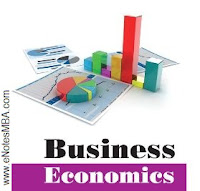Production and Operations Management
The aim of the Production and Operations Management subject is to acquaint students with the concepts and principles of production and operations management; to explain historical milestones in production and operations management, and to elucidate the responsibilities of production and operations management.
The objective of the Production and Operations Management subject is to acquaint the students with decision making in planning, scheduling, and control of production and operations management functions in both manufacturing and services; the impact of information technology and technological advancement for the up-gradation of facilities; and productivity improvement in operations.
Unit 1: Introduction to Operations Management
- Historical milestones in operations management
- Definition of Operations Management
- Difference between Production and Operations Management
- Scope of Operations Management
- Responsibilities of Operations Management
- Key Decisions of Operations Managers
- Recent Trends in Operations Management
Unit 2: Production Processes, Manufacturing and Service Operations
- Production Processes
- Manufacturing Operations and Service Operations
- Characteristics of Manufacturing
- Characteristics of Services
- Challenges faced by Operations Managers
Unit 3: Long Range Capacity Planning and Facility Location
- Long-Range Capacity Planning
- Estimating the Capacities of Existing Facilities
- Forecasting Long-term Future Capacity Demand
- Identifying and Analysing Sources of Capacity to Meet Future Capacity Needs
- Capacity Management
- Facility Location Selection
- Errors in Selection
- Importance of Location Factor
- Location Models
Unit 4: Facility Layout
- Inputs of Layout
- Types of Layout
- Layout Design Procedure
- Layout Problems
- Importance of Facility Layout
Unit 5: Project Management and Scheduling
- Project Design
- Setting Project Objectives
- Scope of the Project
- Work Structure
- Project Structure
- Project Planning and Scheduling
- Program Progress Charts
- Limitations of Bar Charts
- Overview of Capital Budgeting
- Overview of Strategic Planning
Unit 6: Inventory Management
- Defining Inventory
- Nature of Inventory
- Types of Inventory
- Principles of Inventory Management
- Inventory Planning
- Reasons for Maintaining Raw Material Inventory
- Resource Inventory Management
- Planning in Inventory Control
- Hierarchy of Planning
- Effective Material Organisational Structure
- Methods of Valuation of Inventory
- Ratio Analysis in Business
- Inventory on the Income Statement
- Inventory on the Balance Sheet
Unit 7: Quality Management
- Definition of Total Quality Management
- Cost of Quality
- Continuous Improvement - Kaizen
- Employee Empowerment
- Tools of Quality Control
- Process Management
- Quality Standards
- Reasons for TQM Failure
Unit 8: Just-in-Time and Lean Production
- History and Philosophy of JIT
- Just-in-Time Concept
- Benefits and Problems
- Implementation of JIT
- Lean Manufacturing
- Basic Elements of Lean Manufacturing
- Characteristics of Lean Manufacturing
- Benefits of Lean Production
- Transition to Lean Enterprise
- Six-Sigma
- Benefits of Six-Sigma
- Difference between Six-Sigma and TQM






